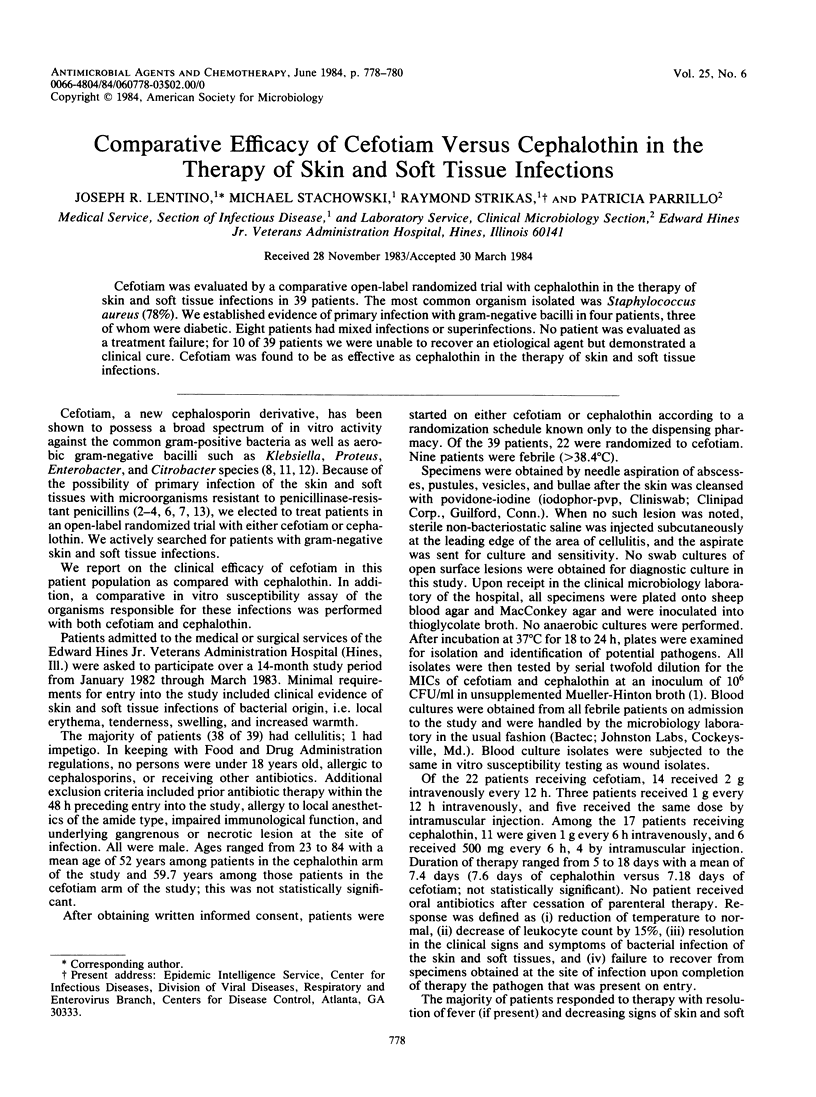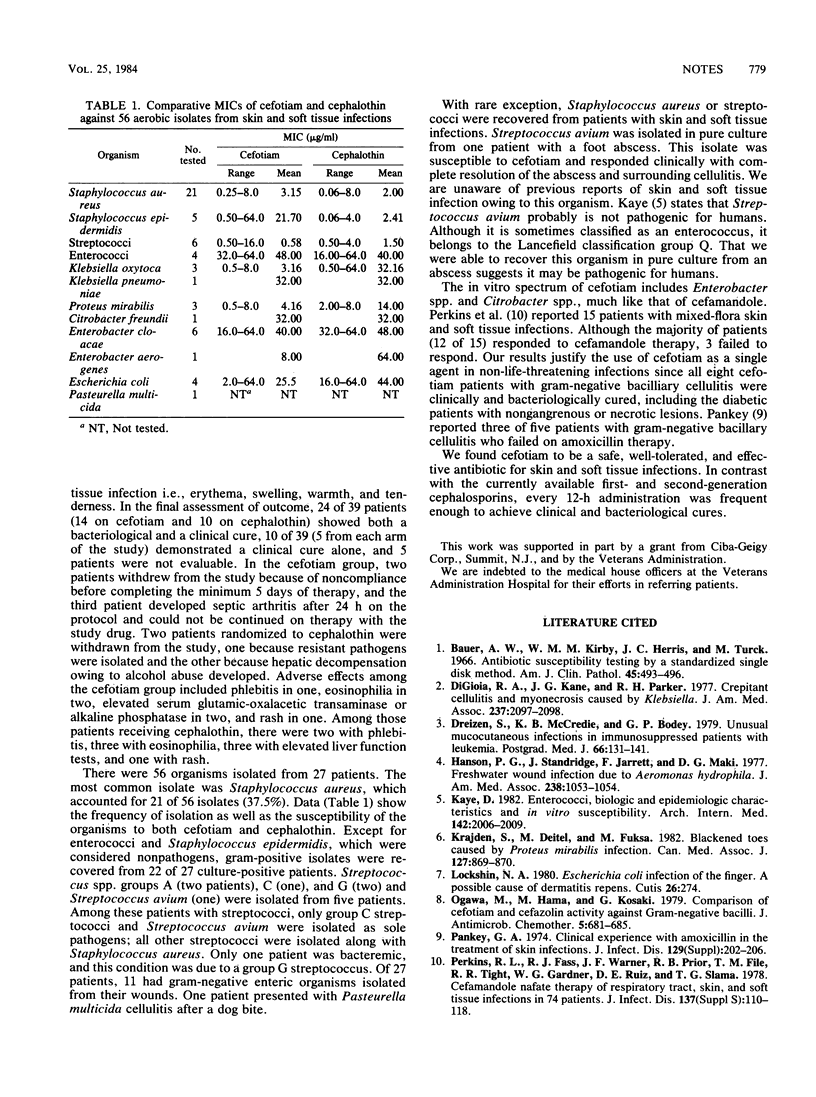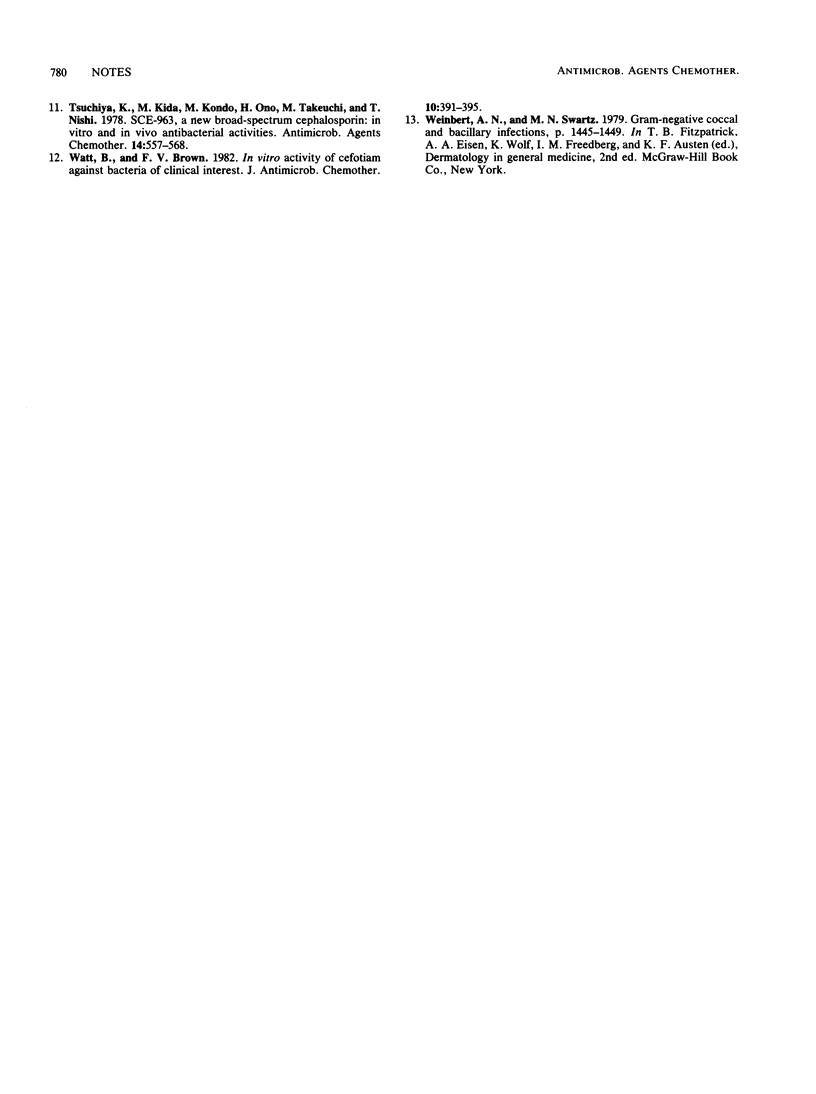Abstract
Cefotiam was evaluated by a comparative open-label randomized trial with cephalothin in the therapy of skin and soft tissue infections in 39 patients. The most common organism isolated was Staphylococcus aureus (78%). We established evidence of primary infection with gram-negative bacilli in four patients, three of whom were diabetic. Eight patients had mixed infections or superinfections. No patient was evaluated as a treatment failure; for 10 of 39 patients we were unable to recover an etiological agent but demonstrated a clinical cure. Cefotiam was found to be as effective as cephalothin in the therapy of skin and soft tissue infections.
Full text
PDF


Selected References
These references are in PubMed. This may not be the complete list of references from this article.
- Bauer A. W., Kirby W. M., Sherris J. C., Turck M. Antibiotic susceptibility testing by a standardized single disk method. Am J Clin Pathol. 1966 Apr;45(4):493–496. [PubMed] [Google Scholar]
- DiGioia R. A., Kane J. G., Parker R. H. Crepitant cellulitis and myonecrosis caused by Klebsiella. JAMA. 1977 May 9;237(19):2097–2098. [PubMed] [Google Scholar]
- Dreizen S., McCredie K. B., Bodey G. P. Unusual mucocutaneous infections in immunosuppressed patients with leukemia. Postgrad Med. 1979 Sep;66(3):131-4, 137-41. doi: 10.1080/00325481.1979.11715251. [DOI] [PubMed] [Google Scholar]
- Hanson P. G., Standridge J., Jarrett F., Maki D. G. Freshwater wound infection due to Aeromonas hydrophila. JAMA. 1977 Sep 5;238(10):1053–1054. [PubMed] [Google Scholar]
- Kaye D. Enterococci. Biologic and epidemiologic characteristics and in vitro susceptibility. Arch Intern Med. 1982 Oct 25;142(11):2006–2009. doi: 10.1001/archinte.142.11.2006. [DOI] [PubMed] [Google Scholar]
- Krajden S., Deitel M., Fuksa M. Blackened toes caused by Proteus mirabilis infection. Can Med Assoc J. 1982 Nov 1;127(9):869–870. [PMC free article] [PubMed] [Google Scholar]
- Lockshin N. A. Escherichia coli infection of the finger. A possible cause of dermatitis repens. Cutis. 1980 Sep;26(3):274–274. [PubMed] [Google Scholar]
- Ogawa M., Hama M., Kosaki G., Shimatani M., Suginaka H. Comparison of cefotiam and cefazolin activity against Gram-negative bacilli. J Antimicrob Chemother. 1979 Nov;5(6):681–685. doi: 10.1093/jac/5.6.681. [DOI] [PubMed] [Google Scholar]
- Tsuchiya K., Kida M., Kondo M., Ono H., Takeuchi M., Nishi T. SCE-963, a new broad-spectrum cephalosporin: in vitro and in vivo antibacterial activities. Antimicrob Agents Chemother. 1978 Oct;14(4):557–568. doi: 10.1128/aac.14.4.557. [DOI] [PMC free article] [PubMed] [Google Scholar]
- Watt B., Brown F. V. In-vitro activity of cefotiam against bacteria of clinical interest. J Antimicrob Chemother. 1982 Nov;10(5):391–395. doi: 10.1093/jac/10.5.391. [DOI] [PubMed] [Google Scholar]


